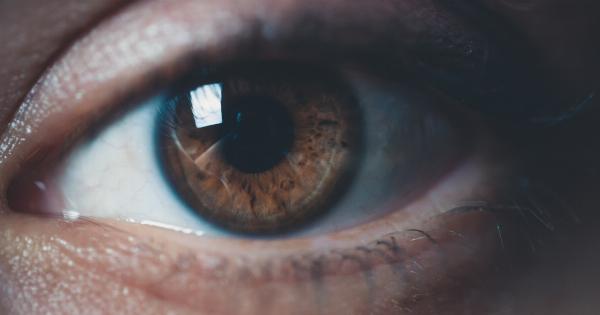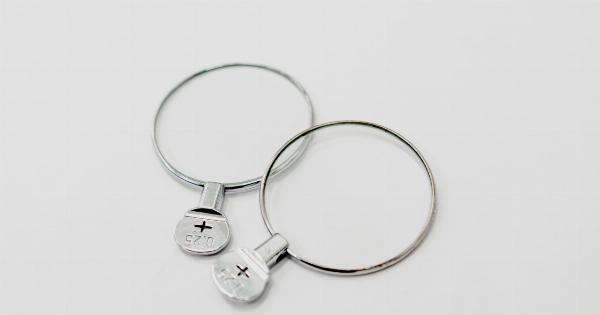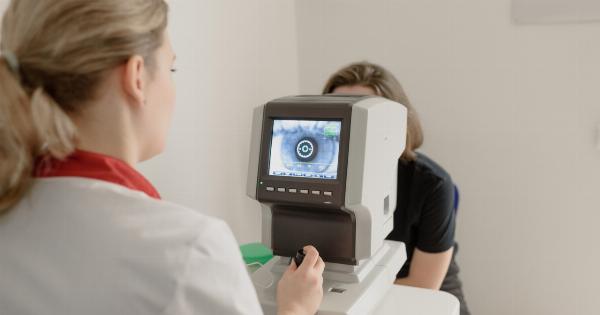Retinal detachment is a serious eye problem that requires immediate medical attention. It occurs when the retina, the layer of tissue in the back of the eye, pulls away from its normal position.
As a result, the retina can no longer receive the necessary nutrients and oxygen from the blood vessels in the eye, which can lead to permanent vision loss if not treated promptly and properly.
Key Causes of Retinal Detachment
Retinal detachment can happen for a variety of reasons, which include:.
- Trauma or injury to the eye
- Severe nearsightedness (myopia)
- Previous eye surgery
- Diabetic retinopathy
- Age-related macular degeneration (AMD)
- Family history of retinal detachment
Signs and Symptoms of Retinal Detachment
Retinal detachment can cause a number of signs and symptoms in your vision, including:.
- A sudden increase in the number of floaters – the tiny specks that drift across your field of vision
- Flashes of light in one or both eyes
- A shadow or curtain descending over your visual field
- A sudden decrease in vision, especially in your peripheral (side) vision
If you experience any of these symptoms, it is important to see an eye doctor immediately. Early diagnosis and treatment of retinal detachment can make a significant difference in preserving your vision.
Treatment Options for Retinal Detachment
Retinal detachment is typically treated with surgery. The type of surgery you undergo will depend on the severity and location of the detachment in your eye. Some common surgical procedures include:.
- Scleral buckle surgery: This procedure involves placing a silicone band around the white of your eye (sclera) to gently push the retina back into place.
- Vitrectomy: During this procedure, your doctor will remove the vitreous humor (the clear gel-like substance that fills your eye) and replace it with a saline solution to help reattach the retina.
- Pneumatic retinopexy: This is a minimally invasive procedure that involves injecting a gas bubble into your eye to help push the retina back into place. Your doctor may also use a laser or freezing technique to help secure the retina in place.
Your doctor will determine which type of surgery is best for your specific case. After surgery, you will need to take certain precautions to ensure proper healing and minimize the risk of complications. These may include:.
- Avoiding straining, heavy lifting, or bending over for several days
- Using eye drops as prescribed to prevent infection and reduce inflammation
- Wearing an eye patch or shield to protect your eye from accidental injury
- Returning to your doctor for follow-up visits to monitor your progress and ensure proper healing
Prevention Strategies for Retinal Detachment
While some causes of retinal detachment, such as trauma or injury, may be unavoidable, there are certain steps you can take to reduce your risk. These include:.
- Getting regular eye exams: Routine eye exams can help detect any changes or abnormalities in your eyes before they lead to serious problems.
- Managing underlying health conditions: Certain conditions, such as diabetes and high blood pressure, can increase your risk of eye problems, including retinal detachment. Properly managing these conditions can help reduce your risk.
- Protecting your eyes during sports or physical activity: Wearing protective eyewear can help prevent serious eye injuries that could lead to retinal detachment.
- Following proper post-surgical care: If you have had eye surgery in the past, it is important to follow your doctor’s instructions for proper post-surgical care to minimize your risk of complications.
Conclusion
Retinal detachment is a serious eye problem that can have permanent consequences if not treated promptly and properly.
Recognizing the signs and symptoms of retinal detachment and seeking medical attention immediately is essential in preserving your vision. By taking steps to reduce your risk and following proper post-surgical care, you can help prevent retinal detachment and other serious eye problems.



























